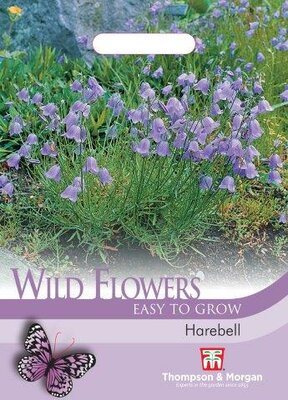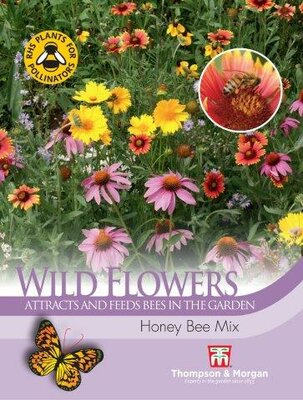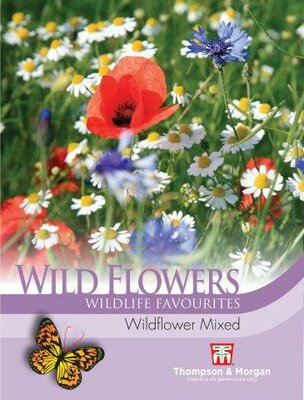Wildflowers
Spring and autumn are excellent times to think about starting up your own wildflower area, whether you are looking to turn an patch of your garden into a wildflower meadow, add a wildflower border or simply have wildflowers growing in a selection of containers. Whatever the option available to you, we have a selection of seeds and mixes available and have put together some guidelines below to help maximise your success in establishing a wildflower garden that will be easy to maintain and prove to be highly beneficial to our wildlife and pollinating insects.
Filter products
Creating your own Wildflower Meadow from seed:
The best time to sow wildflower seed is in spring, usually during the months of March and April when the soil is starting to warm up and become workable. It is also possible to sow seed in September and allow them to overwinter but either way there are a few steps to take to ensure successful establishment of your seeds:
Choose an appropriate site:
Most wildflower seed mixes are a blend of colourful, mood enhancing half-hardy and hardy annuals that can be sown any time from March until about June. These seeds thrive in fairly poor soil, that is well drained or at least moist and free-draining and they generally require full sun so it is worth bearing these factors in mind when choosing where to position your wildflowers.
Prepare your site:
Once you have decided where you want to create your wildflower area, you will need to remove any grass, weeds or large stones.
Do not add any fertiliser or compost. Wildflowers thrive in poor soil conditions so starving your soil of nutrients is actually beneficial to wildflower growth. In fact, if you are sowing wildflower seed where there was previously a lawn or fairly rich soil, it is advised that you remove the top 5-10cm to reduce soil fertility.
Once the area is cleared, for best results, it's a good idea to 'cultivate' the soil over a couple of weeks. Fork it over and just remove any weeds that appear over this period and then just before sowing, rake the surface to a fine tilth.
Sowing your seed:
You will need to scatter your wildflower mix as per the pack recommendations. The Royal Horticultural Society (RHS) also suggests you may wish to mix the seeds with some horticultural sand prior to sowing to make it easier and ensure a more even spread.
Once you have spread your seed, give it a light raking in and perhaps even firm down with the back of the rake to ensure soil contact. If the weather is particularly dry, then give the area some water and that's pretty much it!
Yellow Rattle – to add or not to add:
Where you have an issue with vigorous grasses resurging, it is also advised that you sow some “Yellow Rattle” later in the autumn. Yellow Rattle is a ‘hemiparasite’, meaning it is a parasite on grass. It does not kill the grass but weakens and limits grass growth and therefore is commonly used as a natural tool to control grass growth amongst wildflowers.
Yellow rattle requires an autumn sowing as it requires around 4 months of cooler weather for it to successfully germinate the following spring. So if you are preparing your wildflower meadow in spring, see how it develops and if you have an issue with grasses by late summer, then this is the time think about adding some yellow rattle.
Germination of yellow rattle can be erratic in the first year but you only need a few to establish initially as these will set seed and develop over the first 2-3 years.
Of course, if you don't seem to have an issue with grasses overtaking your plants then this step can be left out altogether.













